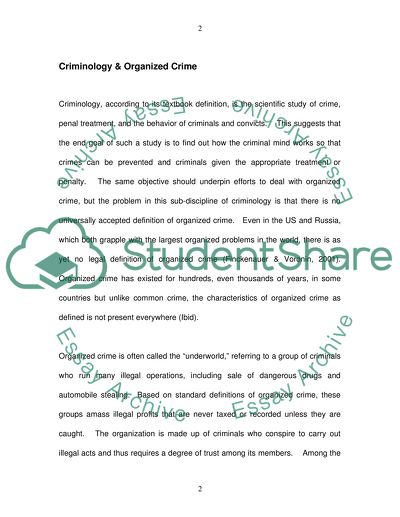Cite this document
(“Organized crime: an evolving phenomenon that defies precise and Essay”, n.d.)
Organized crime: an evolving phenomenon that defies precise and Essay. Retrieved from https://studentshare.org/law/1503481-organized-crime-an-evolving-phenomenon-that-defies-precise-and-clear-cut-universal-definition
Organized crime: an evolving phenomenon that defies precise and Essay. Retrieved from https://studentshare.org/law/1503481-organized-crime-an-evolving-phenomenon-that-defies-precise-and-clear-cut-universal-definition
(Organized Crime: An Evolving Phenomenon That Defies Precise and Essay)
Organized Crime: An Evolving Phenomenon That Defies Precise and Essay. https://studentshare.org/law/1503481-organized-crime-an-evolving-phenomenon-that-defies-precise-and-clear-cut-universal-definition.
Organized Crime: An Evolving Phenomenon That Defies Precise and Essay. https://studentshare.org/law/1503481-organized-crime-an-evolving-phenomenon-that-defies-precise-and-clear-cut-universal-definition.
“Organized Crime: An Evolving Phenomenon That Defies Precise and Essay”, n.d. https://studentshare.org/law/1503481-organized-crime-an-evolving-phenomenon-that-defies-precise-and-clear-cut-universal-definition.


